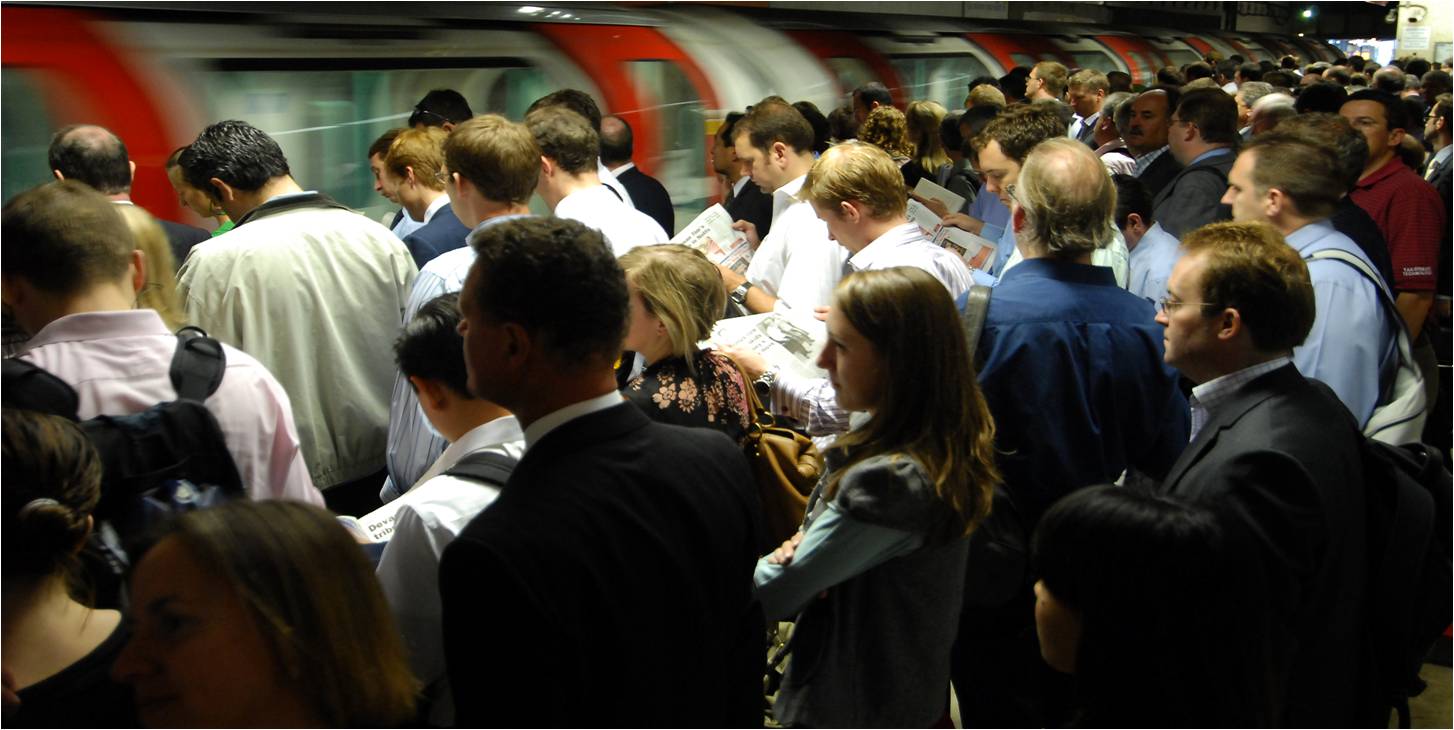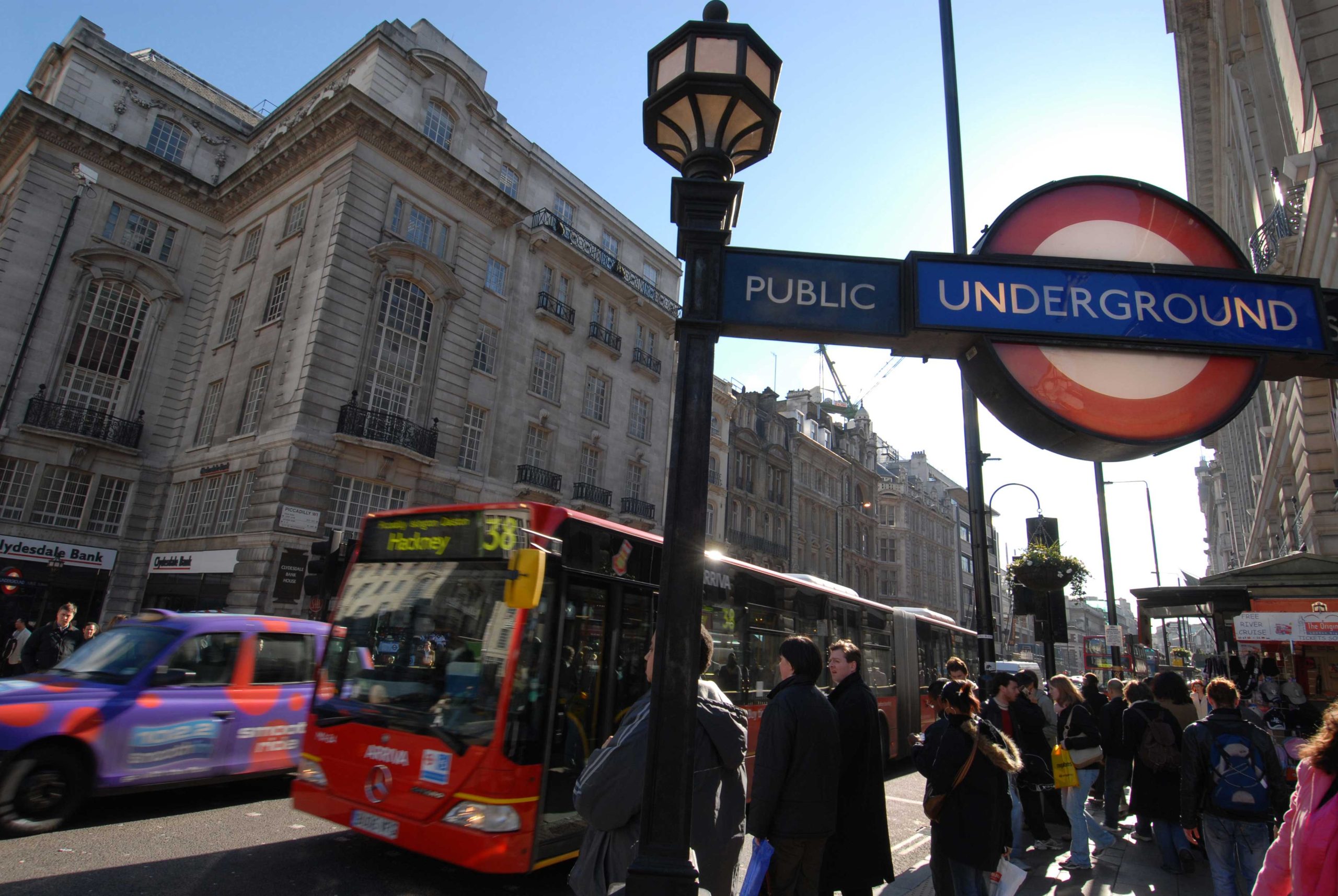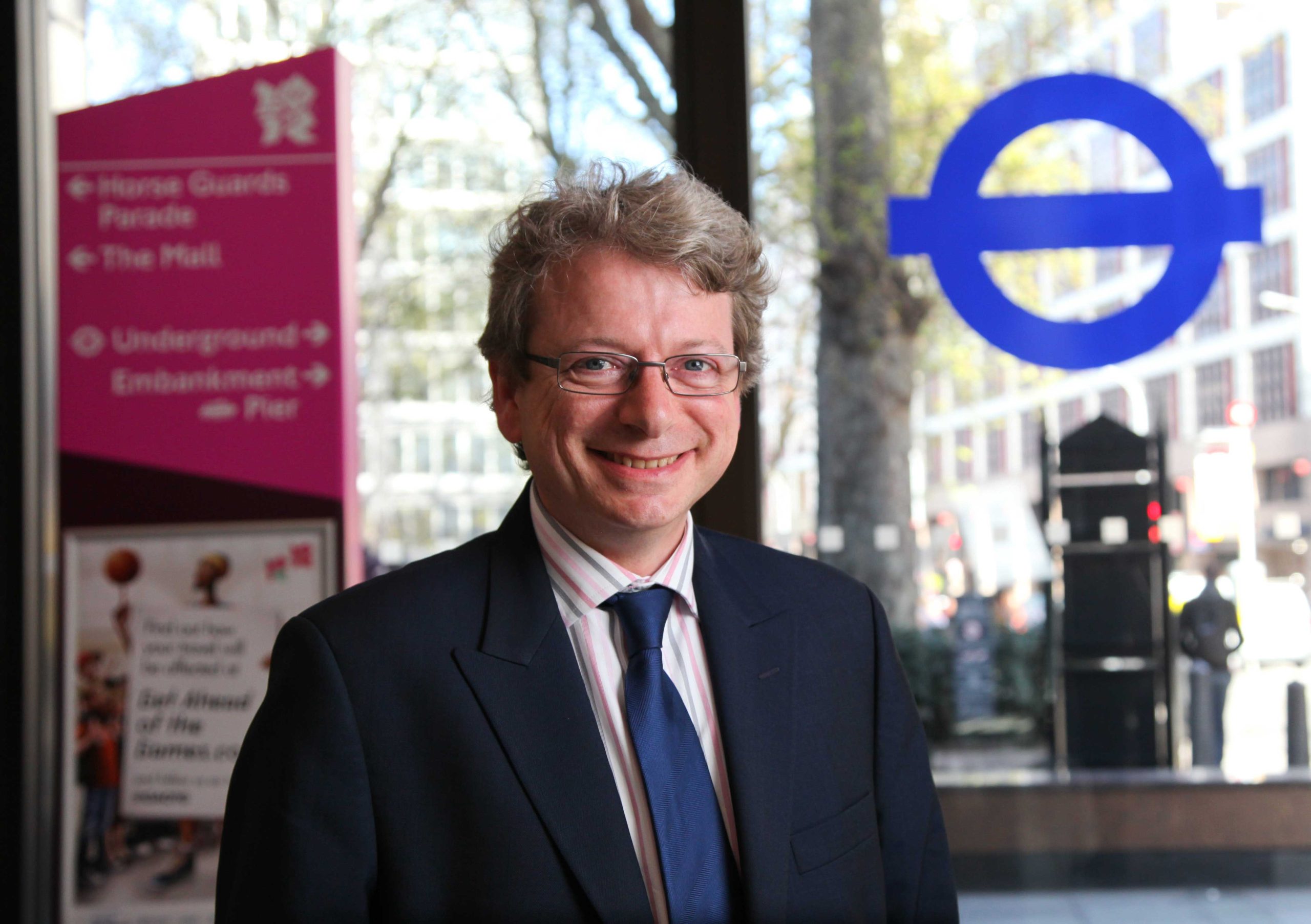
IESE Insight
The route to Olympic gold: logistics lessons for crowd control during citywide events
How does a city’s transport system cope with the stress of millions of extra visitors for the Olympics? The 2012 Summer Games put Transport for London to the test.
David McNeill of Transport for London has his work cut out planning how to move the millions of people descending upon the British capital for the London 2012 Summer Games. If he does his job well, no one will notice him — which is exactly how he likes it.
Sport has always been a rich source of business metaphors, and in this sense, the London 2012 Summer Games being held between July and September 2012 are a gift of suitably Olympic proportions: the teamwork, the ambition, the discipline, the drive for greatness, glory and gold. Business leaders, like athletes, will break records, raise the bar, clear hurdles and go the extra mile to stay on top of their game.
Obvious metaphors aside, the Olympic Games hold other lessons for managers. The organization of such an enormous international event — one that will be watched closely by the whole world — is a case study in logistics.
For the people responsible for this, there will be no sprinting, gazelle-like, across the finish line in front of roaring crowds. David McNeill, the Director of Public Affairs and Stakeholder Engagement for Transport for London, is in charge of making sure that everyone involved in the Olympics will be in the right place at the right time, while also keeping the city moving. His vision of victory may seem somewhat muted when compared with the shining awards ceremonies awaiting the athletes.
“What would be my gold medal?” he asks. “The thing that would be the greatest achievement for Transport for London is that nobody notices it. That transport becomes such a non-issue that nobody talks about it, nobody asks about it, we are not called in for parliamentary inquiries into it. That would be the gold medal. That everybody just says, ‘Oh, well, yeah,’ and forgets about it.”
McNeill does the unglamorous work of the Olympics — the side that no one notices unless something goes wrong. It takes an immense amount of hard work to go unnoticed. In order for London, and the world, to see a successful Olympic Games, it’s crucial that McNeill and his team go the full distance, and at no point drop the ball.
Juggling multiple stakeholder interests
If juggling stakeholder interests were a sport, it would probably make the Olympics. Athletes, the media and spectators all need to get to the events on time. Yet this needs to happen without the rest of the capital slowing down.
McNeill takes a circumspect approach to this challenge. “If you start from a position of, ‘There’s a conflict between the Games’ demand and normal London demand, so this is a conflict resolution exercise,’ then you’re going to get into trouble quite quickly.”
The Olympics’ route network need not get in the way of people living their normal lives in London, he believes, nor daily commuter traffic impede an efficient Games. The best way to avoid these conflicts is to actually talk to all the various parties that might be affected.
“We need to get people to understand how they can still go about their business: how they can get to and from work; how they can do their shopping; how they can get their deliveries in and out.”
Good conversation often carries you to unexpected places. “Transport for London is learning a huge amount about funeral directors in East London and how many stables provide horse-drawn hearses for traditional East End funerals. What you don’t want is a horse-drawn funeral going down the Olympic route network in the run-up to the 100 meters final.”
There are many surprising elements to factor in to the logistics, including the delivery of methadone to central London pharmacies, cash in transit, and postal deliveries to the Palace of Westminster.
“It’s about getting out there and talking to all those communities, organizations and businesses that might be affected in some way. It’s a fundamental logistical exercise. You have to make sure that everybody who might feel some impact is supported in finding the necessary solutions, and in that way you avoid the conflicts.”
Working within differences
Each Olympic Games is organized and performed amid vastly different social, cultural and political milieus. As such, there’s a limit to how far you can look to previous events to guide you with your current planning. London’s social and political culture is poles apart from Beijing’s.
“Even with the best will in the world, if you tell Londoners not to do something, you are almost guaranteed they will do it,” says McNeill.
This means you have to work with people’s choices. For McNeill, the key is to communicate a storyline that emphasizes the advantages for the individual. The rhetoric needs to appeal to common sense, and to people’s freedom of choice and self-determination.
“In other cultures, it is sometimes more about being part of a single society: ‘We will do what our elders tell us to do.’ In that kind of environment, travel demand management is easier, as authorities are able to ban cars from traveling on certain days or close down factories for a week. We could never get away with that in London.”
He adds, “Every host city is different. The transport plan always has to reflect the conditions, the culture and the vibe of that city, and accept that there will be different challenges in different places.”
Smart choices
Innovative technology has become a central defining feature of the organization of the Games.
“Transport for London has been a pioneer in journey planning technology and the use of new media as part of a wider integrated service to our passengers,” says McNeill.
People have long been able to plan their journeys in advance and look up data and maps for themselves using new media technology. But mobile devices, satellite navigation and heat maps have provided big breakthroughs, he says.
Being able to find out what’s happening on the network at any given point in time, and plan alternative routes, all via your smartphone, in real time, is transforming the way people get around. Drivers can now work out distances and plan for added journey times.
Yet even with the help of new technology, eyebrows are still being raised over how the London transport system will cope with the highest ever volume of passengers. McNeill says the sheer numbers aren’t the problem — it’s more how those numbers relate to different parts of the system at different times of the day.
In its favor, Transport for London introduced a contactless smartcard system, known as the Oyster card, in 2003. Though not the first city in the world to do so, London is widely hailed as having one of the best such systems in place.
Using RFID technology, the card can be topped up with money that debits each journey. Passengers just pass the card over an electronic reader when entering and leaving the transport system, which speeds passenger flows and reduces the need for transactions at ticket offices.
More importantly, by having each journey read electronically, it enables an incredibly sophisticated level of data analysis. Transport authorities have real-time data, in granular detail, on how people are using the system: when they get on and off, which mode of transport, the stages of their journeys and so on.
“We already have a wealth of knowledge about what happens during normal summer times, and about the normal patterns of people’s working lives and their use of leisure facilities,” says McNeill. “This greatly enhances our ability to anticipate the needs of the transport system during the Games.”

Contingency planning
Besides being able to project and map travel demand, this data helps organizers with contingency planning. London, at the best of times, is a huge bustling city with massive needs to manage. The Games, extending over weeks — first with the Olympics and then during the Paralympics — presents challenges that test both the resilience of the existing system, as well as its ability to adapt under pressure.
In preparation for the Olympics, McNeill’s team is doing plenty of modeling and scenario planning exercises, many with “ridiculous names like Operation Project Black Chariot or Yellow Fortress,” which test everything from security incidents, to signal failures, to fires on the road network.
“In one,” he says, “we plan for the Strand burning down and causing all sorts of traffic mayhem.”
They even plan for the banal events of everyday life.
“Many of these are less about operations, more about integration: how we integrate our operations with policing and security, and with other parts of government and service provision.”
Cross-cultural intelligence
In terms of foreign visitors, managing the added stress their numbers put on the system is a relatively straightforward issue to deal with. “A lot of this is about marshaling people through the gates. People who are unfamiliar with Oyster cards will try to shove them through the slot rather than slide them over the reader, which can slow things down. So, there will be marshals in place to guide the process along.”
The trickier issue is the cultural dimension. Herding such numbers is harder when you add the multicultural environment into the mix.
There are some behavioral tips that visitors should know about London.
The English are generally more reserved. “We don’t do a lot of ra-ra cheering like other cities that have hosted the Games. But make no mistake: London is excited and nobody can miss the fact that the Games are coming.”
Also, according to stereotype, the British do love a good queue — and a moan, especially about those who ignore or jump the queue.
“Queuing is a big thing for us,” says McNeill. “If you look at Canary Wharf Station, every morning and every evening during the peak periods you will see commuters forming an orderly queue. This is natural behavior.”
Pushing in will need to be managed, he says, especially where there may be children, or people with disabilities and wheelchair users, all trying to board trains and buses at the same time.
To help manage this, there must be good signage. “We have online tools, many of which can be accessed in different languages. The classic Tube map design is incredibly easy to use, and we are reproducing different versions, particularly in languages that have a different alphabet.”
The key point with signage, however, is that it should be intuitive. You need to move away from having lots of different languages, and rather than written cues, give visual cues instead.
That said, London is one of the most multicultural cities in the world, with between 300 and 500 languages spoken, and at least 200 distinct cultural understandings.
“London copes reasonably well, and it’s a safe city. The transport system is even safer, with generally very little trouble or tension.”
On top of this diversity, Londoners are quite canny. “They know the roads, the public transport system, the alternative journeys to take. They know what to do if one line goes down or a station is closed.”
Given all this, McNeill thinks Londoners will be able to cope with whatever is thrown at them, as an estimated 4 million extra visitors are added to London’s mix of 7.8 million people.
What keeps me awake at night
McNeill’s worst nightmare for the Games is not what you might immediately imagine.
“We can recover from the Jubilee Line going down for half a day. We can recover from traffic problems. But my worst nightmare — the thing that keeps me up at night — is burnout. It’s a genuine management issue that we are all facing.”
He explains how everyone is working flat out in preparation for the Olympics. And when the Games finally do arrive, they will have to maintain the same pace.
“I’m already seeing a lot of my staff feeling tired. The opportunity for people to take holidays in the run-up to the Games will be very limited, and it will just be relentless for us. I worry about losing a key member of staff to tiredness, or fatigue, or just to one of those colds that turns into three weeks out with the flu.”
For McNeill, it’s clear that maintaining staff health and morale is the main management goal. “It’s vital to keep people happy, healthy and reasonably rested through months and months of incredibly hard work.”

Getting people to think differently
“After university, I went into political lobbying and public affairs. I’ve worked in single-issue campaigning, consumer lobbying and legal services. Before I joined Transport for London, I was the Director of Press and Public Affairs at the Arts Council.
“Such experiences taught me what you need to do to get your point across to agencies, organizations and politicians — which is useful now as my job is to deal with the politicians and organizations, such as disability groups and the Confederation of British Industry, which have an interest in Transport for London.
“Fundamentally, the Olympics exercise is getting people to do things differently and to make that process easy for them. And that’s essentially been my job for 25 years.
“To get people to think differently, to plan differently, you need to make a persuasive case and give people the tools they need to do the things you want them to do.
“It’s not just the obvious people you should go to. Nor is it just the big organizations that you should prioritize. You have to think of everyone who might conceivably be impacted by the changes you are proposing, and then go out and communicate directly with those communities. This requires having a hive mind — a collective consciousness or intelligence — sort of like being a nice Star Trek Borg.”
Article written by Lydia Smears, a former assistant editor of IESE Insight. This article was originally published in IESE Insight magazine (Issue 13, Q2 2012).
